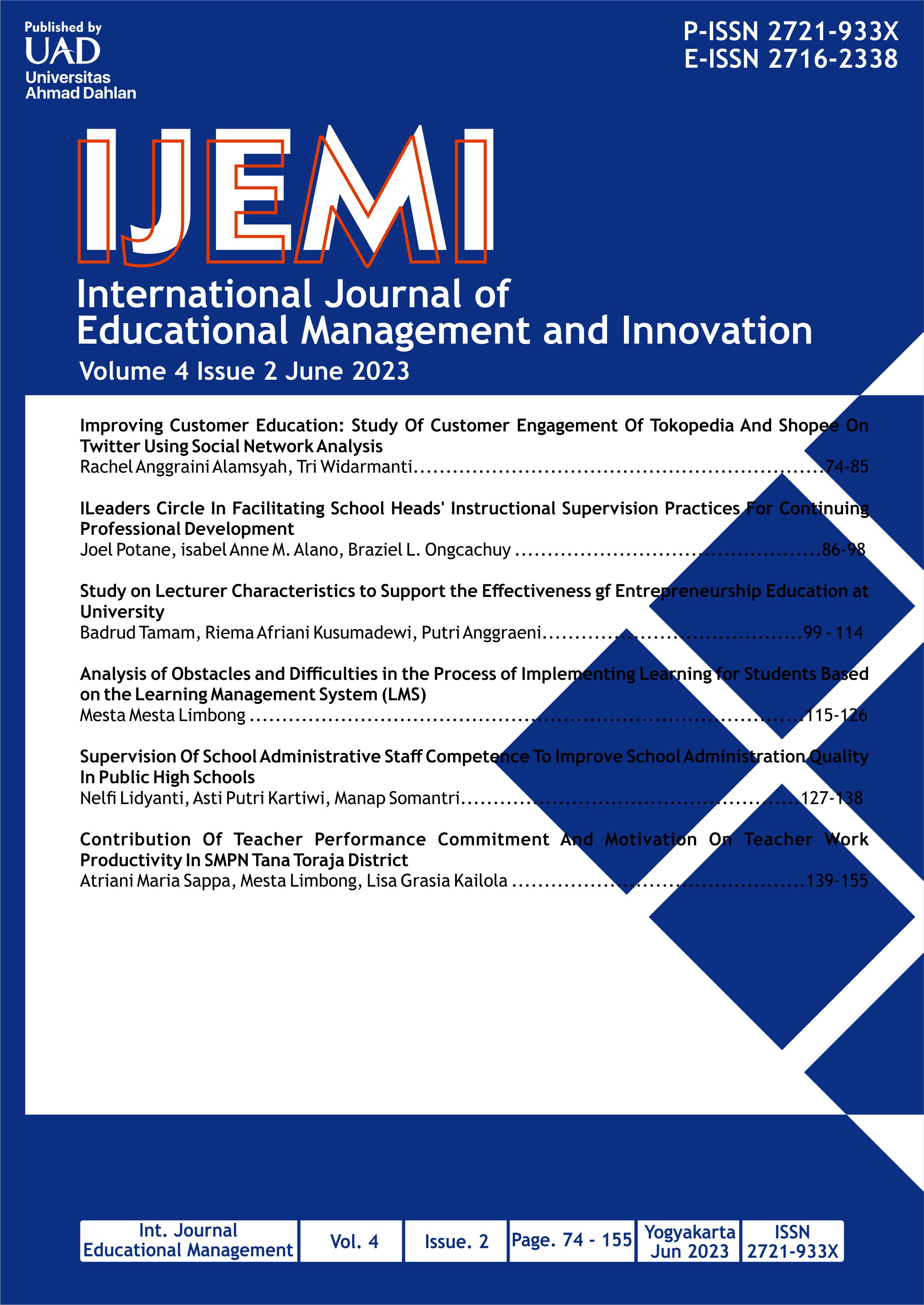Analysis of Obstacles and Difficulties in the Process of Implementing Learning for Students Based on the Learning Management System (LMS)
DOI:
https://doi.org/10.12928/ijemi.v4i2.8034Keywords:
Learning Management System, Higher Education, EvaluationAbstract
Indonesia is among the world's largest archipelagic regions, with thousands of tiny islands. So many people may not obtain a decent education, such as attending advanced learning. To conquer this circumstance, particularly in light of the unreleased impact of COVID-19 and the global scale crisis, which undoubtedly impacts education in general. Each method for adjusting to shifts in higher education employs a Learning Management System (LMS). This descriptive study uses secondary data and a phenomenological approach to analyze how lecturers prepare lecture material using LMS. This study approach indicates that not all lecturers have scheduled material that students can download at any time via LMS. Because it is necessary to prepare lecturers and support structures that can be easily accessed per applicable regulations to organize the LMS, efforts that can be made to overcome obstacles to the LMS implementation include requiring each lecturer to prepare lecture materials in a structured and timely manner, as well as monitoring. Students can then repeat material that they might have already missed. This is one ideal solution for shutting the achievement gap.
Downloads
Published
How to Cite
Issue
Section
License
Copyright (c) 2023 Universitas Ahmad Dahlan

This work is licensed under a Creative Commons Attribution-ShareAlike 4.0 International License.
The copyright to this article is transferred to Universitas Ahmad Dahlan (UAD) if and when the article is accepted for publication. The undersigned hereby transfers any rights in and to the paper including without limitation all copyrights to UAD. The undersigned hereby represents and warrants that the paper is original and that he/she is the author of the paper, except for material that is identified as to its source, with permission notices from the copyright owners where required. The undersigned represents that he/she has the power and authority to make and execute this assignment.
We declare that:
This paper has not been published in the same form elsewhere.
It will not be submitted anywhere else for publication before acceptance/rejection by this Journal.
Copyright permission is obtained for materials published elsewhere and which require this permission for reproduction.
Furthermore, I/We hereby transfer the unlimited rights of publication of the above-mentioned paper in whole to UAD. The copyright transfer covers the exclusive right to reproduce and distribute the article, including reprints, translations, photographic reproductions, microform, electronic form (offline, online), or any other reproductions of similar nature.
The corresponding author signs for and accepts responsibility for releasing this material on behalf of any and all co-authors. This agreement is to be signed by at least one of the authors who have obtained the assent of the co-author(s) where applicable. After submission of this agreement signed by the corresponding author, changes of authorship or in the order of the authors listed will not be accepted.
Retained Rights/Terms and Conditions
Authors retain all proprietary rights in any process, procedure, or article of manufacture described in the Work.
Authors may reproduce or authorize others to reproduce the Work or derivative works for the authors' personal use or for company use, provided that the source and the UAD copyright notice are indicated, the copies are not used in any way that implies UAD endorsement of a product or service of any employer, and the copies themselves are not offered for sale.
Although authors are permitted to re-use all or portions of the Work in other works, this does not include granting third-party requests for reprinting, republishing, or other types of re-use.




